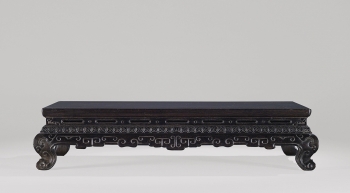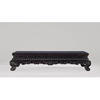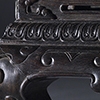Catalogue Note
The size of the present lot is delicate and is regarded as a small piece in comparison to other Imperial furniture. The design of this charming Kang table is both meticulous and complex. By extension, the superb raw materials and the techniques involved in constructing it are very costly. Similar pieces can often be found in the Imperial palace, particularly during the mid-Qing.
In retrospect, the shape of Chinese furniture continued to evolve until the Qing dynasty, when, due to the influences of Manchurian customs, many varied types of furniture were produced, not hitherto seen in previous Dynasties. In quest for new techniques and shapes, there was great innovation in palace furniture giving rise to a new style of furniture. Commonly referred to as the Qing style, typified by its sumptuousness and complexity. The present lot with legs curved in an S-shape originates from the tribes of nomadic shepherds that once lived in Northern China. It can be transported with great ease and was used to put on the kang or alternatively as a low side table to be placed on the bed. With the coming to power of the Manchurian Qing dynasty, many changes were introduced in way of life such as the incorporation of these kang tables
into everyday life.
In retrospect, the shape of Chinese furniture continued to evolve until the Qing dynasty, when, due to the influences of Manchurian customs, many varied types of furniture were produced, not hitherto seen in previous Dynasties. In quest for new techniques and shapes, there was great innovation in palace furniture giving rise to a new style of furniture. Commonly referred to as the Qing style, typified by its sumptuousness and complexity. The present lot with legs curved in an S-shape originates from the tribes of nomadic shepherds that once lived in Northern China. It can be transported with great ease and was used to put on the kang or alternatively as a low side table to be placed on the bed. With the coming to power of the Manchurian Qing dynasty, many changes were introduced in way of life such as the incorporation of these kang tables
into everyday life.


